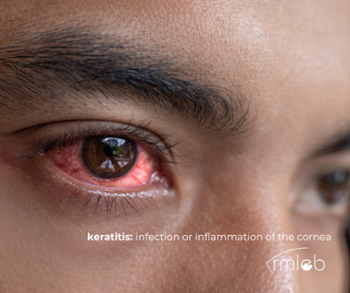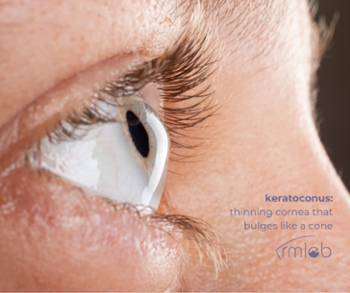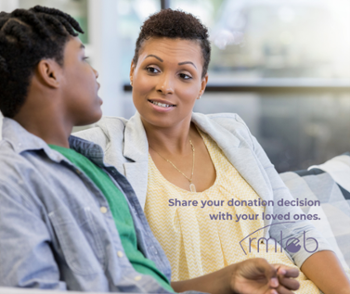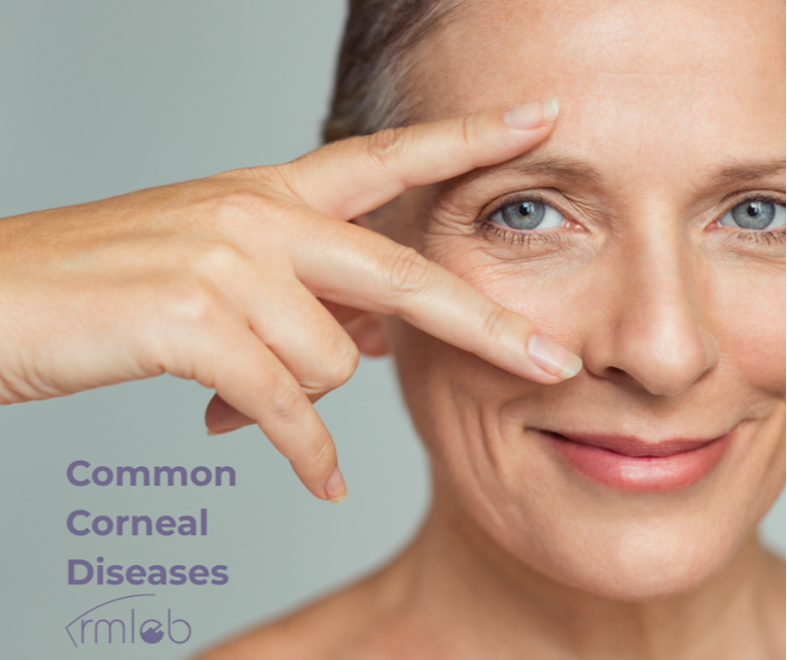Corneal Blindness Diseases Affect Millions Worldwide - Here’s Why Eye Donation and Transplants Matter More Than Ever
From keratoconus to Fuchs’ Dystrophy, learn how corneal blindness disease contributes to the need for eye tissue donors and cornea transplants.
By Ryeá O'Neill - October 3, 2025
According to the Academy of Ophthalmology, there are more than 20 different types of corneal dystrophies. The cornea is the clear front part of the eye, where a contact lens would sit. In fact, the cornea looks similar to a contact lens when recovered for transplant. This small but mighty eye tissue is vital to our vision as it is responsible for two-thirds of the eye's focusing power.
Considering the cornea's strength and vital role in our vision, understanding corneal blindness dystrophies and their prevalence leads to the need for eye tissue donation and transplantation.
Fuchs dystrophy symptoms appear around age 50 and later.
The cornea is made up of five distinct layers: epithelium, Bowman’s layer, Stroma, Descemet’s membrane, and the innermost layer, the endothelium. According to Johns Hopkins Medicine, the endothelium layer consists of cells that do not regenerate and must maintain a fluid balance to prevent cell loss. Fuchs dystrophy disease causes the cells to die, leading to a disruption of fluid balance within the cornea. Symptoms include cloudy or hazy vision in the morning in the early stage, and in later stages of the disease, vision remains blurry all day.
Fuchs dystrophy symptoms appear for most people at around age 50 or later; although most have the disease as early as their 30s and 40s, they do not know it. Your eye doctor will look closely at your cornea during routine eye exams and refer you to an ophthalmologist as needed. Ophthalmologists are medical doctors and are the most qualified among eye care professionals to diagnose and treat a wide range of eye diseases and disorders.
There are few treatments for Fuchs dystrophy, including eye drops or ointment to reduce swelling in the early stages of the disease. When the cornea is scarred and vision is blurry, ophthalmologists may recommend a corneal transplant.
Keratitis results from eye infections.
Keratitis is inflammation or an infection of the cornea, either bacterial or fungal. According to the Mayo Clinic, keratitis can be noninfectious, caused by injury, or infectious, caused by bacteria, viruses, fungi or parasites. Eye redness, eye pain, decreased vision and excess tears or discharge are common symptoms of keratitis. These symptoms can permanently damage your vision and cause blindness; thus, they should be reported to your eye doctor immediately.

Photo caption: Inflammation of the conjunctiva,
as seen here without magnification,
is a common occurrence with keratitis.
People who wear contact lenses, have dry eye, cold sores, shingles, chicken pox, or who have injured the cornea are at risk for developing keratitis. If symptoms worsen or are left untreated, the cornea may be permanently damaged. If the damage to the cornea cannot be treated with medication or the damage is too significant, an ophthalmologist may recommend a corneal transplant to help restore vision.
Keratoconus is the most common corneal disease.
Doctors do not know why people develop keratoconus, a progressive cornea thinning that causes the cornea to bulge like a cone. According to the Eye Bank Association of America, Keratoconus is the most common corneal dystrophy in the United States, affecting one in every 2,000 Americans. When the cornea changes shape and thins, it causes your vision to become blurry (nearsightedness) and distorted (astigmatism). Soon, daily tasks like driving or even reading become difficult.

Most people will experience keratoconus symptoms in their late teens to early 20s, reports the Academy of Ophthalmology. Symptoms usually develop in both eyes, leading to different vision issues between the two, and they can change at different rates over time. Early symptoms include blurred vision, slightly distorted vision, increased sensitivity to light, and redness or swelling of the eye.
For most people, it can take years for keratoconus to develop to late-stage symptoms, including early symptoms, increased nearsightedness or astigmatism, and difficulty wearing contact lenses due to the cone-shaped cornea.
When symptoms are severe enough, ophthalmologists may suggest a corneal transplant. The partial or whole replacement of a diseased cornea with a corneal transplant can help restore vision for people with severe keratoconus.
Eye donation and transplant can help treat common corneal diseases.
With conditions like keratoconus affecting 1 in 2,000 people and the World Health Organization reporting infections like keratitis being a leading cause of preventable blindness globally, corneal diseases are relatively common. Corneal diseases can become more common as individuals ignore symptoms or miss annual eye exams. You can help prevent corneal diseases in several key ways and play a crucial role in restoring sight. Below are three easy things that you can do today to make a difference:
-
Make your annual appointment with your eye doctor today. Having a yearly eye exam helps preserve the health of your eyes. Your eye doctor will check the health of your cornea during each visit. If there are any concerns, you may be referred to an ophthalmologist for further treatment.

-
Talk about donation with your loved ones. Understanding and learning about eye donation is crucial to making an informed decision that aligns with your values and beliefs. Talking about eye, organ, and tissue donation after death can be difficult; yet, having an open dialogue about donation ensures your decision will be honored by your family when the time comes. Families of eye tissue donors have said that discussing donation and knowing their loved one’s decision brought them comfort during a time of grief.
-
Register your donation decision to give the gift of sight. Saying yes to being an eye tissue donor after you pass away is a legally binding decision and a selfless act. You can join the donor registry by saying yes to eye, organ, and tissue donation when you get your driver license or permit in Colorado and Wyoming. The donation decision is one that can restore hope and vision for those in need. Just one individual can restore sight to two people through eye donation!
By taking these simple yet easy steps, you can make a difference by preventing and managing corneal diseases, restore hope with eye donation, and help others regain vision through eye tissue transplantation. You can restore hope and sight for others in need.
